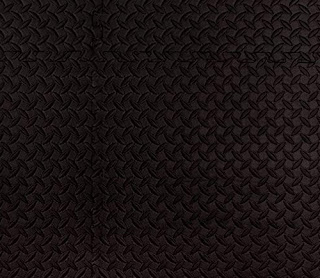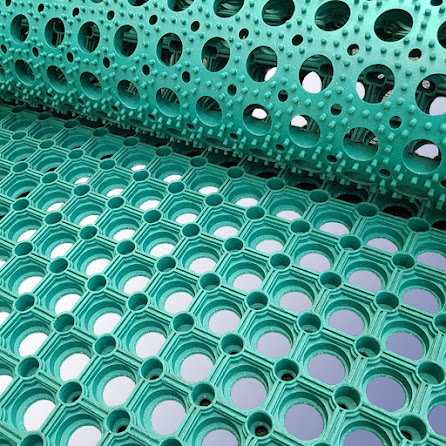Electrical Safety Rubber Matting
Electrical safety matting, sometimes referred to as an insulated floor covering helps protect individuals working on electrical installations from the dangers of electric shock, and has to comply with BS EN 61111:2009 which replaced the previous standard, BS 921: 1976. Electrical Safety Matting is a vital part of electrical safety and is typically used for protection around areas where high voltage (HV) equipment – such as a switchboard - is being used and worked upon, but it is also available for working on low and medium voltage (LV and MV) equipment. Typical applications include when working in front of switchboards, machine control gear, in plant rooms and lift control gear rooms, and also as portable protection for site engineers working on live equipment. As part of a firm’s risk assessment, if there is any potential risk of shock, then electrical safety matting is recommended in the HSE's Safe Working Practices for Electricity at Work document, HSG85, where it references BS EN 61111: 2009 (Live working. Electrical insulating matting British Standards Institution). Its use will help prevent earth contact through the floor. The HSE (www.hse.gov.uk) also recommends the use of insulated matting in relation to electrical hazards when welding, and for electrical safety when working in quarries, construction sites and other similar activities.
Choosing with care
Electrical safety mats are made specifically for the purpose of electrical insulation and shock prevention, and are tested to withstand specified voltages for the level of risk, so it is crucial that the right level of protection is allowed for in line with the voltage of the equipment that is being worked on. BS EN 61111 materials are also required to meet a host of additional technical requirements not covered by the BS921 standard that ensure longevity of use in harsh environments.
BS EN 61111:2009 v BS 921:1976
BS 921:1976 was withdrawn because it did not meet the new requirements determined by the BSI working group and consequently the new national standard of Electrical Matting, which is BS EN 61111:2009, was created. Under the requirements of BS EN 61111:2009, the matting must withstand a greatly expanded scope of testing compared with the BS 921:1976 standard. It categorizes differing levels of working voltage and allocates a Class of protection against these. It also stipulates a maximum thickness of material required to achieve this compared to a minimum thickness defined within BS921:1976, and as such endeavors to ensure a high quality of material design. Each meter of matting is also color-coded and indelibly branded on the reverse to highlight what level of protection it offers and thereby ensure both correct usage and full traceability back to the manufacture.
Compliance with BS EN 61111:2009, therefore, means that the matting will have a number of benefits over the BS 921: 1976 standard, as it is oil and acid resistant, flame retardant, lighter in weight, and there are various classes for different voltage applications. Matting manufactured to the superseded BS 921: 1976 is still available, as it is suitable for its originally intended use in the UK. However, for new applications and installation companies should be specifying BS EN 61111, and identifying the correct grade for the voltage in use.




Comments
Post a Comment